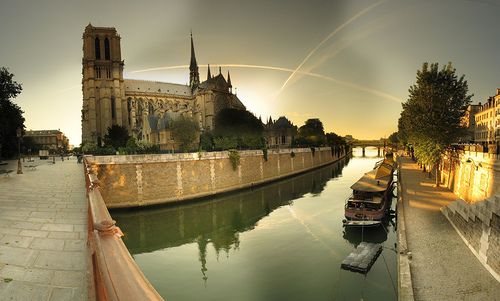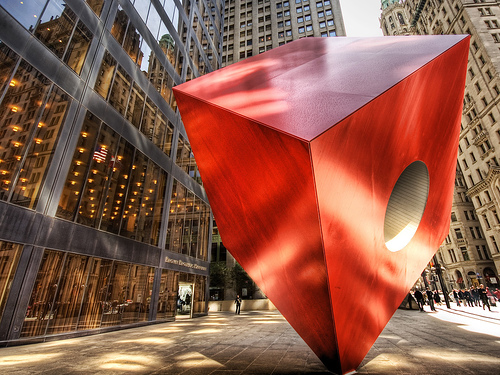
A good way of learning is to learn from the mistakes. The intelligent way of learning is to learn from the mistakes of others. Everyone makes mistakes while picking up things for the first time, which later showers experience and growth. The same fact holds true for photography as well. Learning, knowing and starting of with exposure basics, composition techniques, camera modes and settings provide you a platform for practically experimenting the concepts; which ultimately makes way for grasping things through mistakes you make in the course of learning things. Here are 10 common mistakes and ways how you can improvise over the mistakes frequently made by the photographers.
-
Not Knowing The Camera In And Out
The excitement of owning the camera makes you overconfident. Time to step back. Its time to know your camera — read the user manual, familiarize yourself with the dials, controls & modes of the camera and get ready for the test shots. After doing well at warm-up, now you are in a good position to explore the possibilities and the opportunities for photographs that makes sense. Photography is not just releasing the shutter; it is far more than that. It follows the entire procedure (as any other form of art).
- Visualize: Carefully observe and spot an interesting subject or scene to shoot.
- The Strategy: Adjust the camera settings for achieving the desired effect like attaining DOF or freezing the motion or capturing the motion & movement.
- The Effort: Hold the camera firmly and press the shutter release.
The essence of the photography lies in framing the imaginations to your expectations which requires you to be thorough with the camera features, settings and limitations (as to what you can do with the camera you own). If the camera you own does not provide the aperture priority mode, photographing the depth of field is out of question.
-
Overlooking The Camera Settings
This mistake counts from my personal experience. As soon as I spot a beautiful scene / subject, I just pick my camera, zoom-into the scene and click. And in one instance, after looking at the result on the LCD, I realized something had gone wrong. The camera was set up for bracketing instead of the normal exposure. Having learned from my own mistakes, here is a quick piece of advice. Always check out the camera settings prior to going out for a shoot. Even though mistakes result in great results (sometimes), but overlooking the camera settings often result in missing the perfect shot and attributed as carelessness.
-
Not Having The Camera Handy
You have the best camera, perhaps a Nikon D7000 or Canon EOS 5D Mark II or a Sony Cybershot and the time you spot an interesting subject, perhaps a playful kid or a pet pass by, how would you feel when you miss that perfect shot. It hurts to miss the shot more than not finding an interesting subject when ready with the camera in hand. So, the best thing to do is to realize the importance of timing in photography and keep your camera handy for shooting surprise shots nature has planned for you. No I’m not asking you to keep the camera handy in the kitchen. But you get the point.
-
Overlooking A Strong Point Of Interest
Yousuf Karsh says
“Look and think before opening the shutter. The heart and mind are the true lens of the camera”.
Having the camera in hand doesn’t mean that you are free to shoot. If you are there to make a mark with your photographs and want to create a masterpiece, look around to spot something that interests you, attracts you & lures you and then freeze that moment to make an outstanding photograph. If there is a particular person in the crowd or a specific flower in the garden which took you by a surprise, then separate that object from the rest of the clutter to put forth your point of view (and your way of expressing things visually).
-
Including Conflicting Subjects
When photographing, it is really difficult to draw a line as to what should be included and what be excluded of the frame. Be very thorough and particular about the composition of the frame. The composition techniques teach a lot about how & where to place the subject, how including lines, patterns, textures, perspective add in making a good photograph. But one thing which I have learned by observing the photographs is that you should never portray the competing subjects onto the same frame. It would be something like offering apples and oranges; and the interest of the viewer remains divided of the ambiguity.
-
Using Flash Inefficiently
The best camera mode for shooting is the auto-mode. Let the camera decide when to use the flash and when to slow down the shutter speed to compensate for low-light. That was my approach when I started off with my camera until I realized that flash fired by the camera in the auto-mode spoils the entire frame. I also believed the the flash was only to compensate for low-ambient light. This was my second mistake. The fact is that the in-built camera flash is a good source of light not only for low-ambient light, but also when shooting against other sources of light. The trick lies in using the flash efficiently. Experiment with bouncing the flash off the wall or try using it as the complimentary source of light or learn to use rear sync flash mode; all these activities will contribute in realizing the importance of flash in photography. Learn to use flash effectively.
-
Misinterpretation Of Lights
Light is the second most important element in photography (next to right time). It can either make the photograph or break the photograph. Lights play an important role not only in illuminating the subject, it affects the overall presentation of the photograph. For some subjects / scenes the direct sunlight acts as the perfect source of illumination (for textures), while sometimes angular light helps in portraying the depth in the scene. Consider to soften & diffuse the light when photographing the portraits. Learning to interpret the lights and its properties comes in handy for making the most from the available lights.
-
“Photo-shopping”: The Digital Attitude
With digital camera in the hand comes the digital attitude. The attitude of correcting the images during post processing. At the beginning you may just love to release the shutter without actually taking care of the basic elements of a good photograph. Photography is not the art of correcting the things off-camera. Photography is not about “photoshopping”. While post-processing is required for making some crucial adjustments, you can never get the natural colors, lights and expression with any amount of editing. It is a huge waste of time if you rely on photo-editors to get great colors and proper exposure.
-
Always Shooting At Same Level
Always shooting at the same angle and same level makes the photographs portray the subject as it normally appears to the human eye. It lacks expression and fails to convey the dynamics of the subject or the scene. Whereas photographing at various levels help in portraying strength, superiority, authority or negligibility of the subject. For example looking at the photograph of a building shot from the ground level makes you feel the enormity of the huge structure and portraying the same structure from a higher vantage point enable you to express inferiority of the structure. Put an extra thought into building a perspective.
-
No Concern For Zooming-In
The professional photographers use the camera zoom to get tight crops and to fill the frame with only the desired elements in the scene. Zooming in the subject and scene clearly helps in expressing the interest and delivering a strong focus on the subject or the scene. It adds a new meaning to the perspective. Zooming out to include unwanted objects results in clutter and induces distracting elements thereby killing the interest in a photograph.
Remember a mistake that you can contribute?






